(CLO) Mixed in with the sound of heavy rain falling on the corrugated iron roof are the sounds of chiseling and occasionally the steady sound of wooden fish echoing in the quiet space of a small hamlet located quite remote on a hill in group 11, area 6, Thuy Xuan ward, Hue city. And it is these strange sounds that show the existence of a unique craft village, that of wooden fish carving.
Hue in the rainy season is really sad. The sky, the roads, the grass and trees everywhere are all a gloomy gray, wet and dreary. I intended not to go anywhere, but then I thought about it and put on a raincoat, took my motorbike across Truong Tien bridge, onto Dien Bien Phu street, then turned right onto Le Ngo Cat street towards Tu Duc tomb.
After wandering around for a while, passing several slopes, several vast gardens deserted and drenched in the rain, I finally arrived at the village of bell makers in Thuy Xuan ward.

Mr. Truong Van Thao, one of the few non-ethnic people who has pursued and stuck with the traditional craft of gong carving of the Pham Ngoc family in Thuy Xuan, Hue. Photo: Minh Giang
The already deserted village became even more deserted on a rainy day, the streets were deserted. While I was wondering who to ask, I suddenly heard the sound of chiseling, then the sound of wooden clappers. I looked around and discovered a small workshop making wooden clappers hidden in a lush green garden. I drove my bike into the alley, saw a group of 4-5 workers sitting there working diligently, and when I asked, I learned that this was the house of Mr. Pham Ngoc Du, a family with three generations of famous wooden clappers in Hue.
Guessing that it was almost Tet, there were a lot of goods, everyone was busy working, inside and outside the house, there were all kinds of big and small gongs displayed, sawdust and wood shavings were scattered everywhere. Not wanting to interrupt everyone's work, after greeting and asking permission from the owner, I quietly observed and learned. And the more I learned, the more interesting things I discovered about this unique profession that I saw with my own eyes for the first time.
Pham Ngoc Phuc, a young man who has just turned 30, the grandson of Mr. Pham Ngoc Du, said that the mining profession in Thuy Xuan has existed for a long time, no one knows when. In his family, his grandfather used to do the job and then passed it on to his father, then his father passed it on to the three Phuc brothers. According to Phuc, this profession is very strange, rarely passed on to the outside world, and even if it is passed on, few people can learn it, so in the end, there are only the three brothers and a few relatives in the family who advise each other to do it.
According to Phuc, not many people have become rich thanks to the profession of making gongs, but no one is poor either; in general, they have enough to live on. Hue is a Buddhist land, so there are many pagodas and almost every house has a Buddhist altar, thanks to which the profession of making gongs is also treated with some special treatment.
Nowadays, Thuy Xuan's wooden fish is known throughout the country. Many pagodas in the North and South have heard of it and come to order it. Occasionally, it is even exported to some Buddhist countries such as Laos, Thailand, Cambodia, China, Japan, Korea, etc. Further, Buddhist expatriates living in European countries come to order it.

Because the sizes of the wooden bells are not the same, all the decorative patterns on the body of the wooden bell are drawn directly by hand and then carved, not following any fixed pattern. Photo: Minh Giang
The profession of making wooden gongs seems simple but is actually very difficult, because it has its own secrets and tricks. Even the choice of wood is special, because among hundreds of types of wood, it seems that only jackfruit wood can be used to make wooden gongs. People say that jackfruit wood makes a good sound and has a yellow color that is very compatible with the color of Buddhism.
To make a beautiful and well-sounding wooden fish, the craftsman must go through many stages, from selecting wood, roughly carving to create shape, carving, painting and drying... and most importantly, carving the sound box (sound resonance box), this is considered the secret of each artisan and each family.
Pham Ngoc Phuc said that up to now, there has been no book teaching the technique of carving the gong, it all depends on the hands and experience of the craftsman. To carve the gong, the craftsman often uses a long trough-shaped chisel, sometimes up to a meter long, then chisels little by little deep into the wood block.
Because the inside of the wood has to be chiseled and cannot be seen clearly, everything depends on the craftsman's talent and experience. The craftsman must estimate the depth, thickness, hardness and softness of the wood, and even rely on the sound and feeling of the hand through each chisel stroke to consider and calculate accurately. Everything does not follow any standard or pattern, but requires extreme precision and perfection, because if the chisel is not done enough, the thick wooden block will not make a sound when struck, and if it is too thin, the sound will be very unpleasant to the ears.
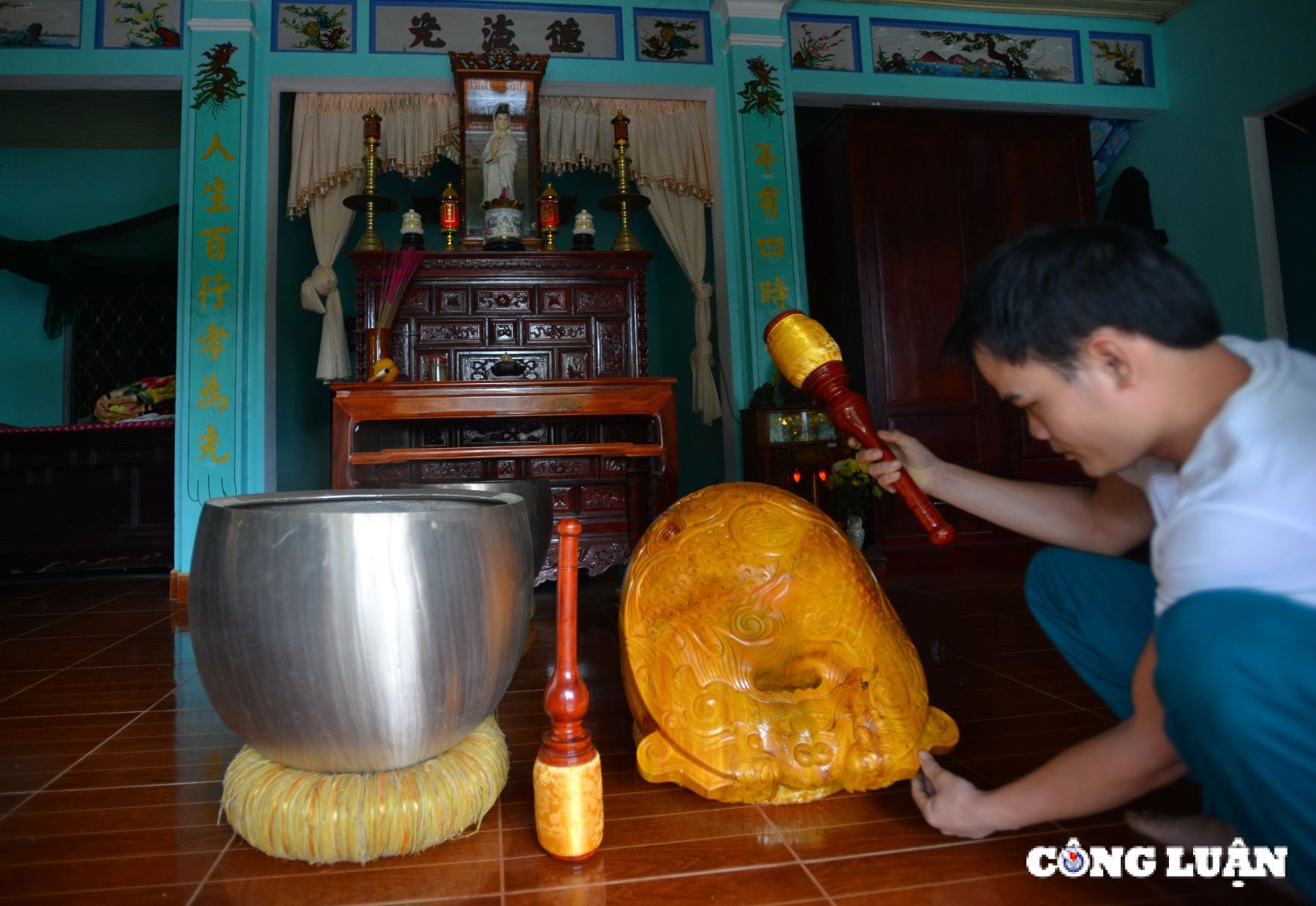
In Buddhist culture, bells and wooden fish are two important musical instruments used to keep the rhythm for chanters. If the chanting is fast, the wooden fish will beat fast, if the chanting is slow, the wooden fish will beat slow. Photo: Minh Giang
Because the technique of carving the sound chamber is so complicated, it seems that the number of people who can do it can be counted on the fingers. That is why many establishments that produce wooden gongs using CNC cutting machines, although they can create wooden gong blanks very quickly, evenly and beautifully, but when it comes to carving the sound chamber, they are helpless, so they have to bring it to the workshop of skilled artisans like Mr. Pham Ngoc Du's family to hire them to do the most important part, because after all, no matter how beautiful the wooden gong is, if the sound is not good, it is useless.
As if to show the guests the elaborate craft of making wooden gongs, Phuc led me into the Buddhist altar in the middle of the house, took out a newly made wooden gong, and used a mallet to strike it. And once again that day, I heard the strange sound of the wooden gong, deep and mixed with the sound of falling rain echoing between the sky and the earth. That sad but peaceful sound seemed to remind people that Hue still has a quiet craft village but carries the heavy sentiment of Hue's love.
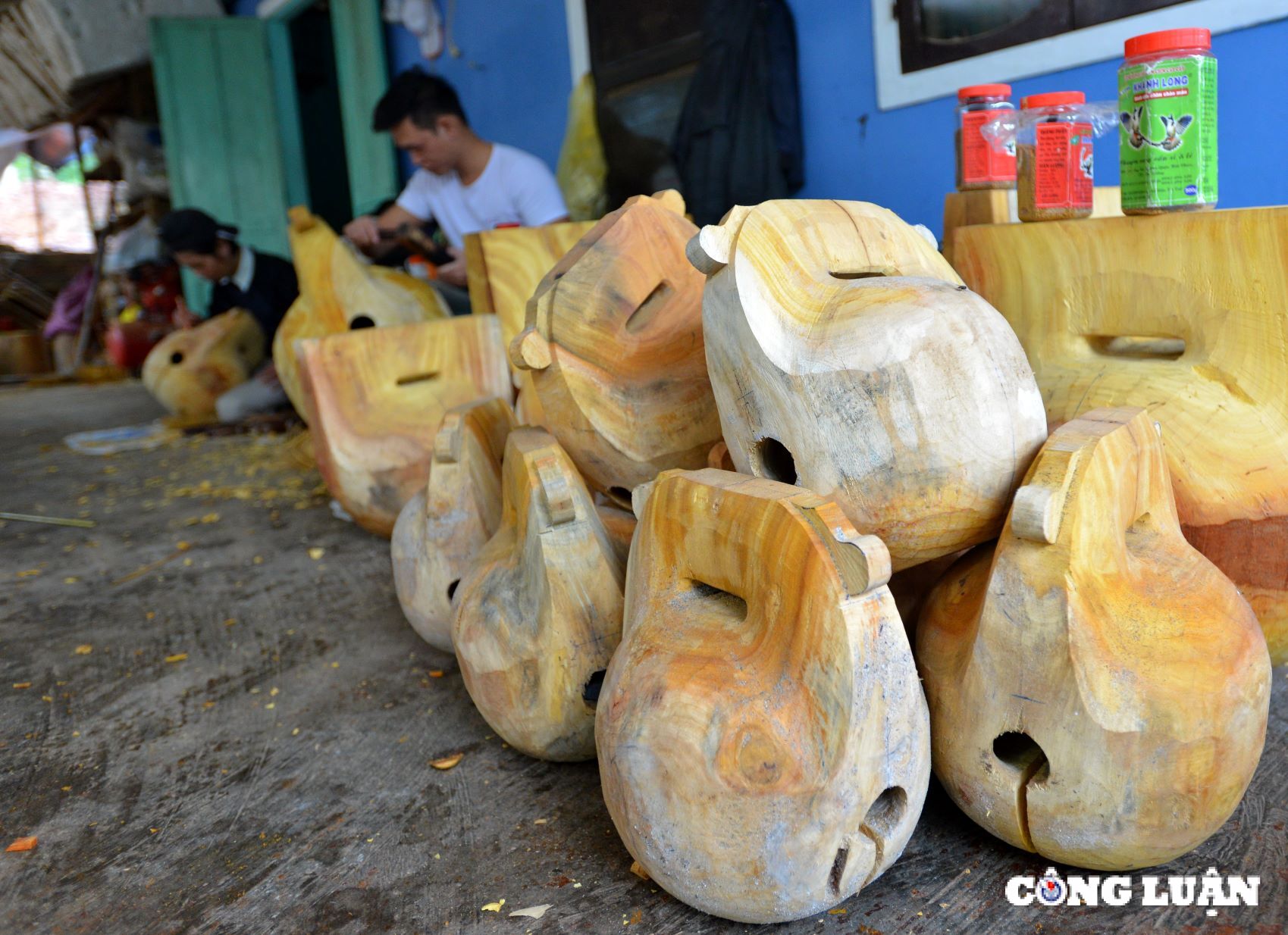
The wooden clapper blanks are hand-carved but have quite uniform and round sizes and shapes. Photo: Minh Giang
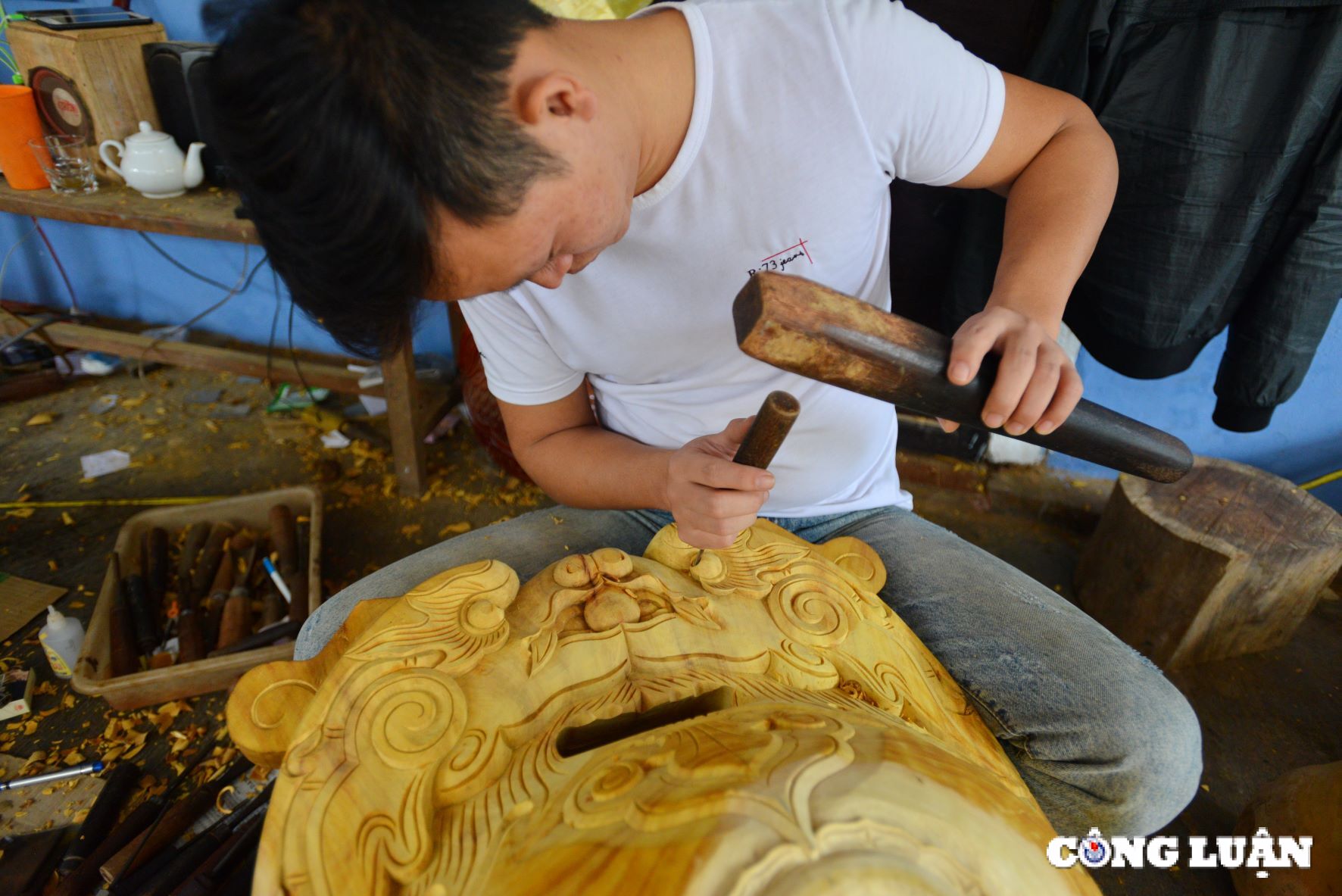
In Buddhist culture, the wooden fish's ear, also known as the wooden fish's handle, is often decorated with dragon or carp heads. Photo: Minh Giang
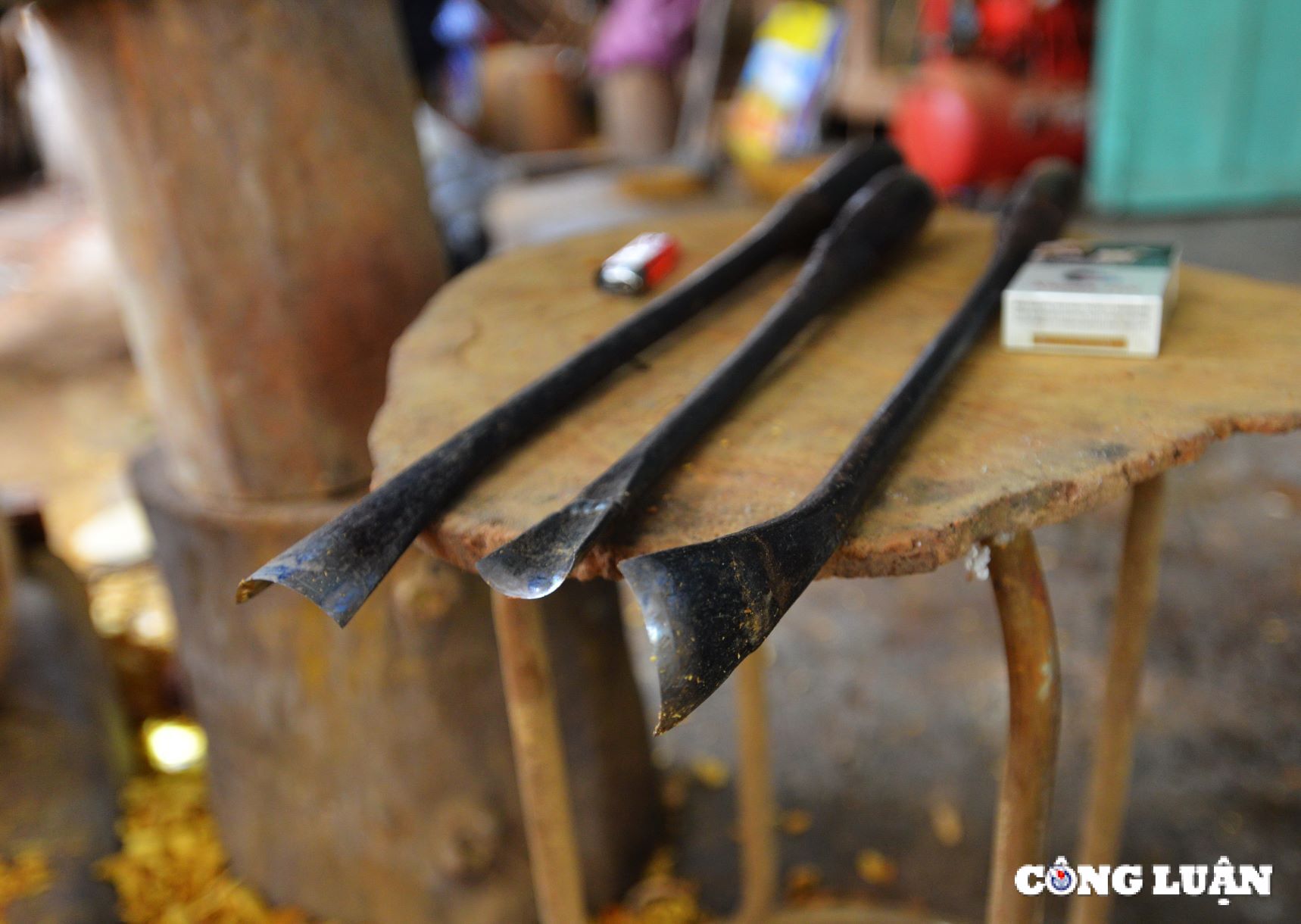
To chisel the negative cavity, people use a special chisel with a trough-shaped blade and quite long, sometimes up to a meter long depending on the size of the beak. Photo: Minh Giang
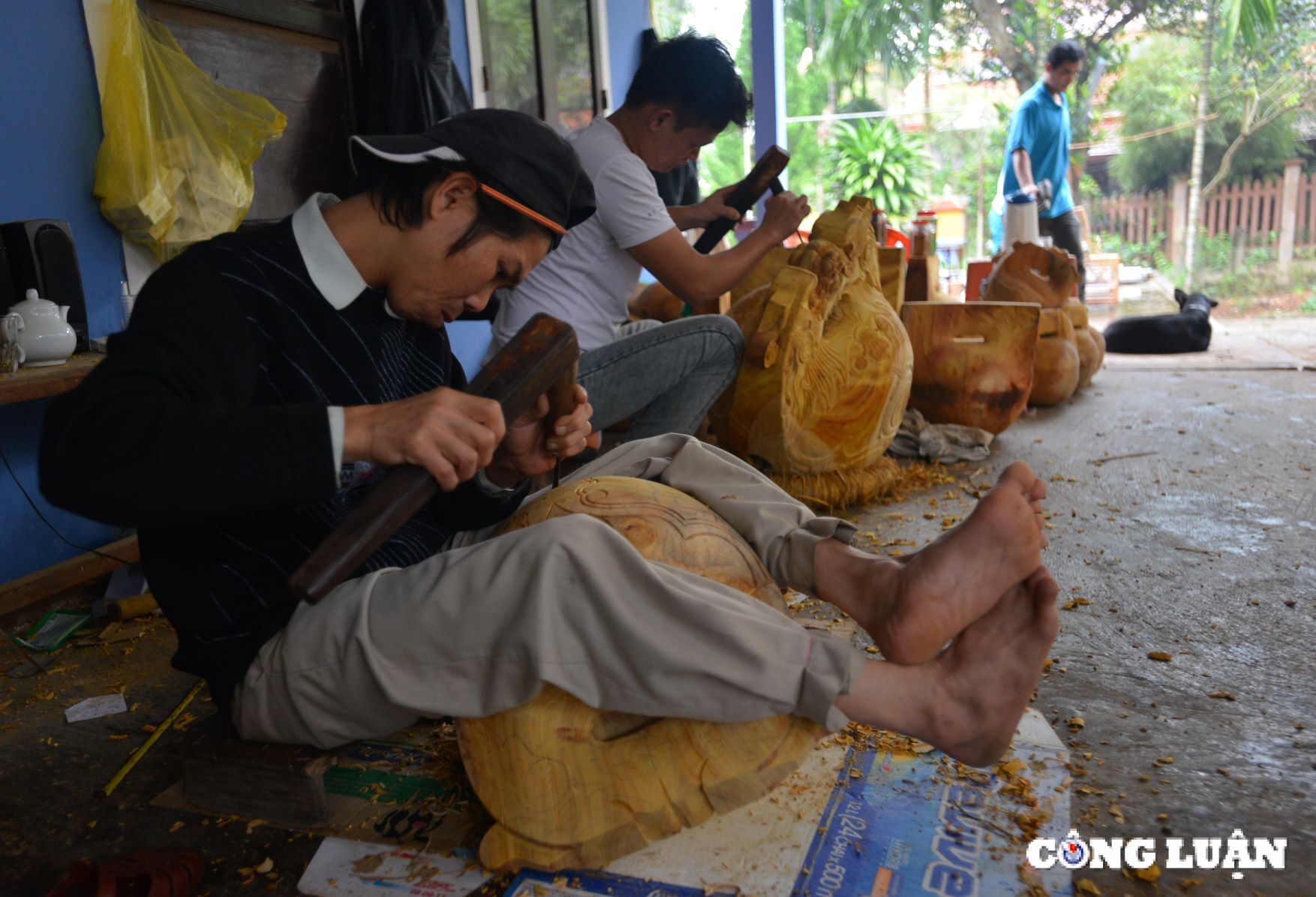
Because the gong is round and easy to roll, the familiar posture of the carver is to cross his legs and hug the body of the gong. Photo: Minh Giang
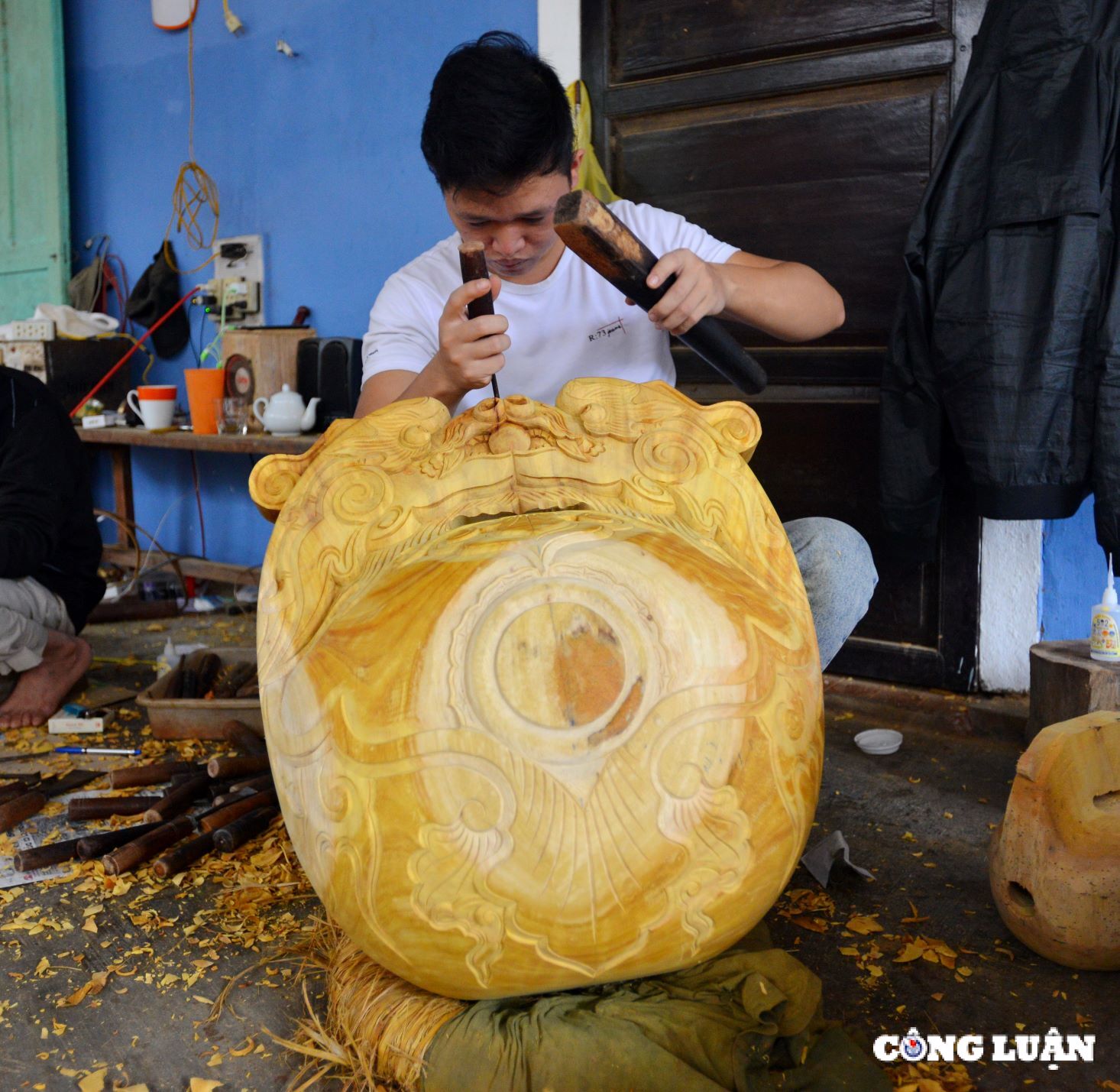
Despite his young age, Pham Ngoc Ro has a very solid skill in carving decorative wooden fish. Photo: Minh Giang
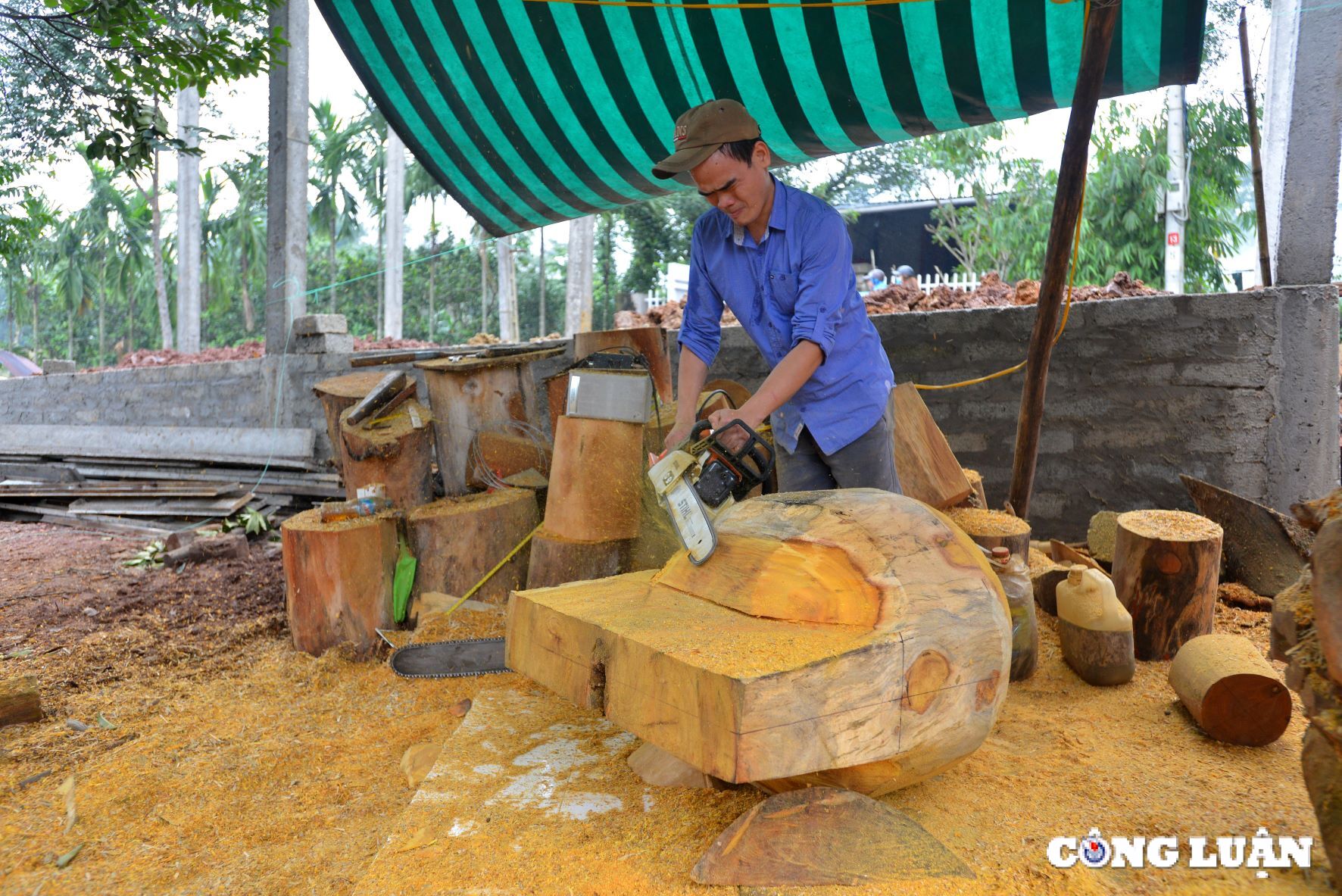
To create the initial shape of the large gong with a diameter of more than 1 meter, Pham Ngoc Duc had to use a chainsaw, the type of saw often used to cut down trees by lacquer workers. Photo: Minh Giang

Funny, cute and familiar images often seen at the Pham Ngoc family's wooden clapper workshop. Photo: Minh Giang
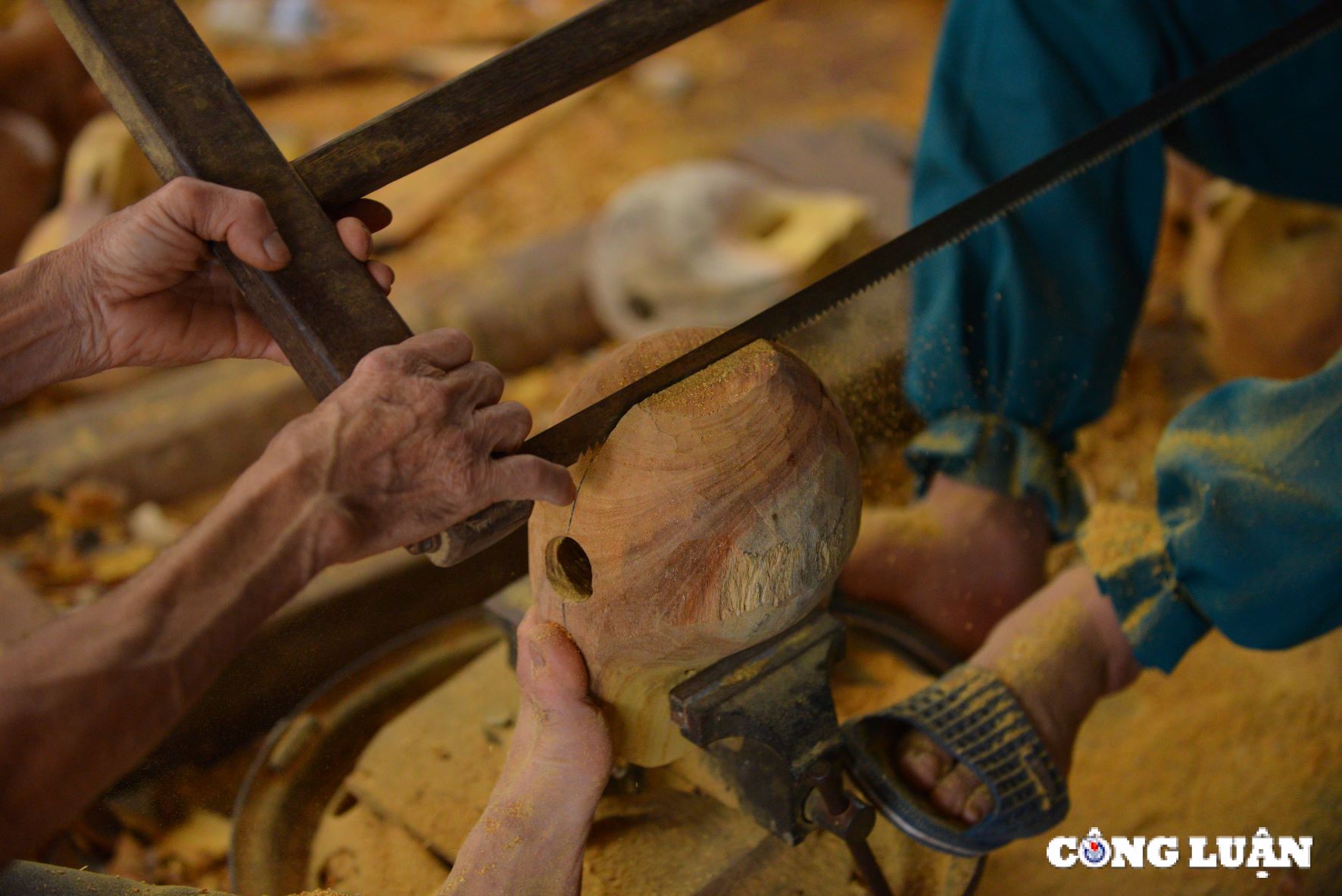
The width and narrowness in the sound chamber cutting technique greatly determines the sound creation of the gong. Photo: Minh Giang
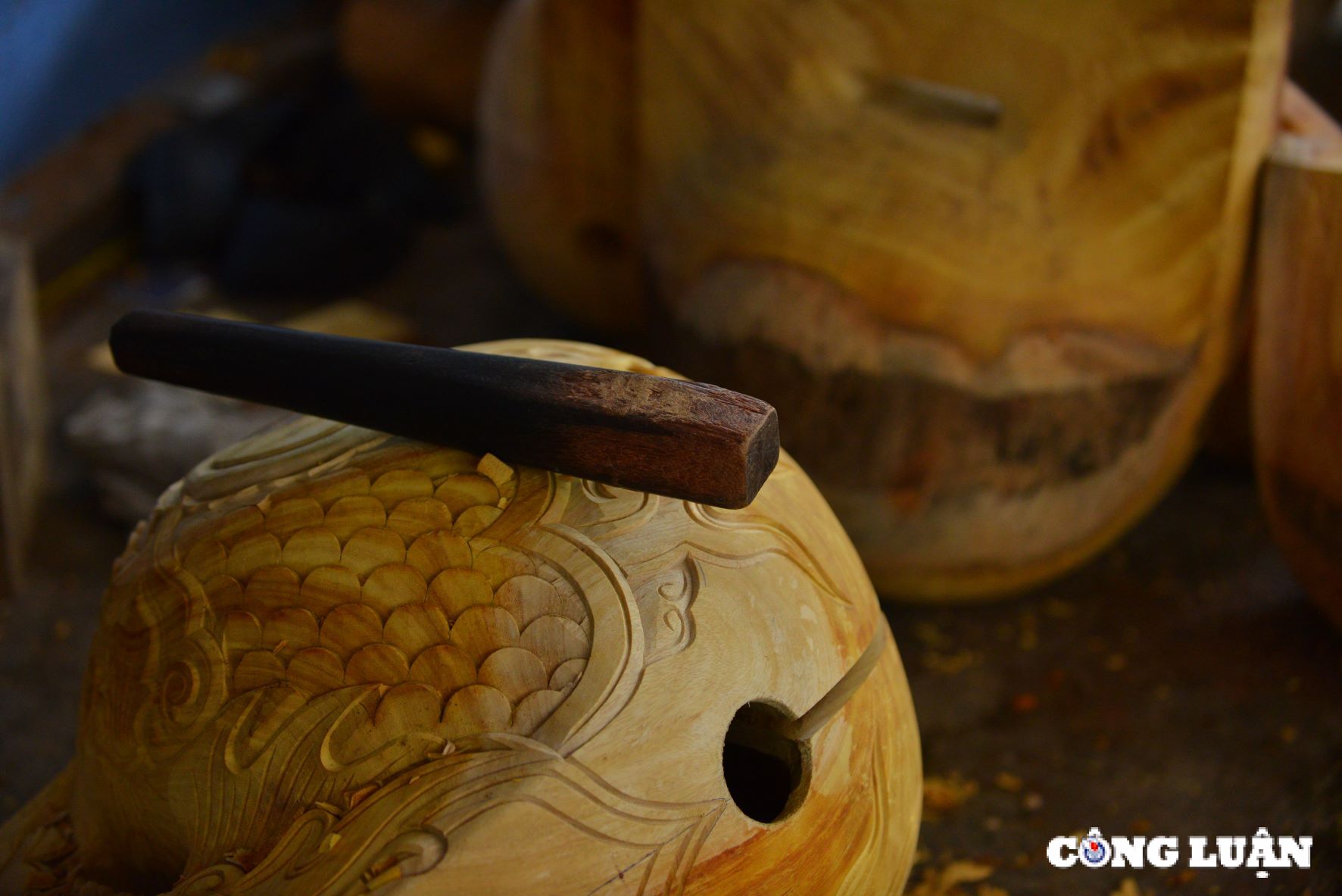
Chisel, called baton by Hue people, is a simple but indispensable tool for gong makers. Photo: Minh Giang
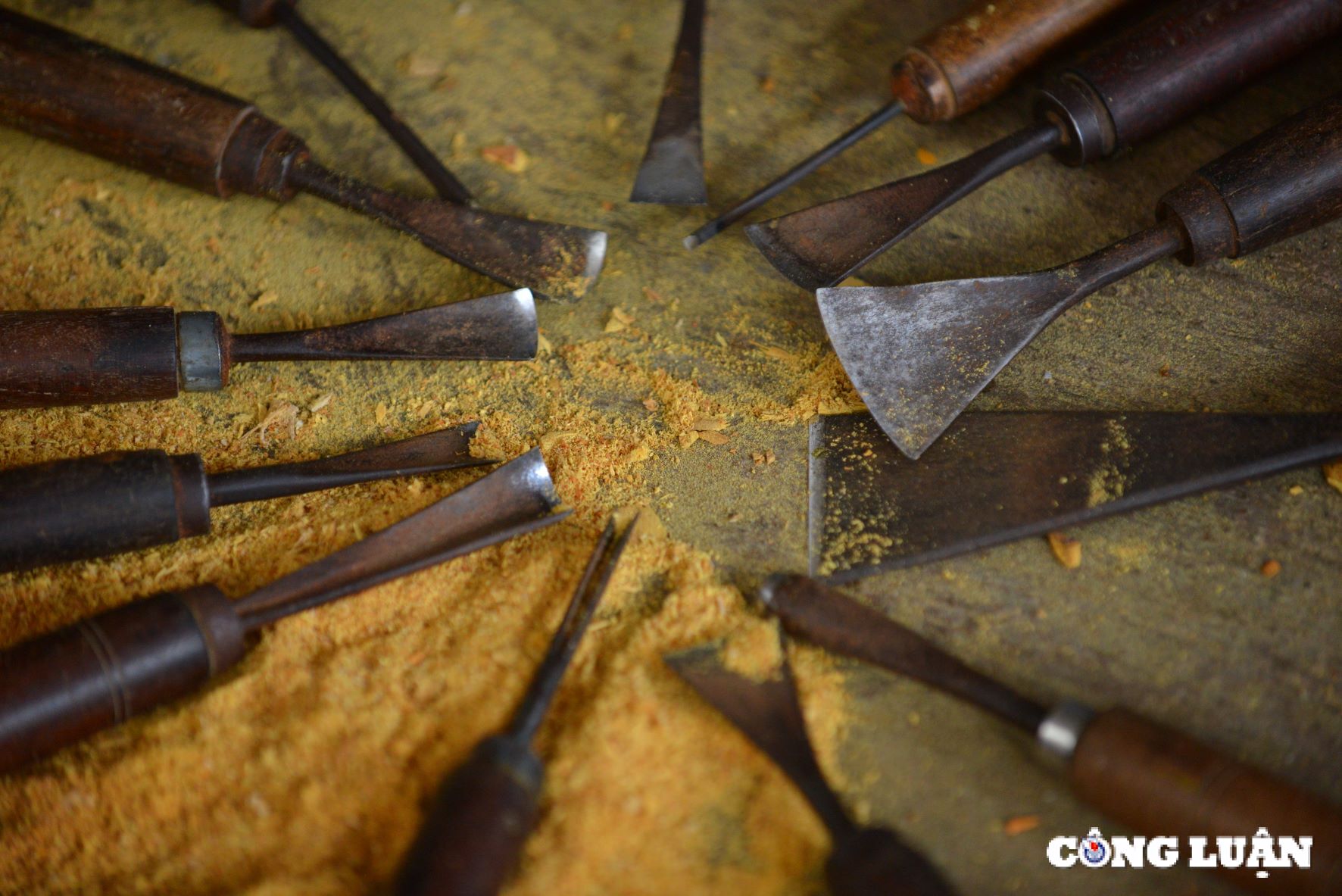
Razor-sharp tools of the gong makers. Photo: Minh Giang
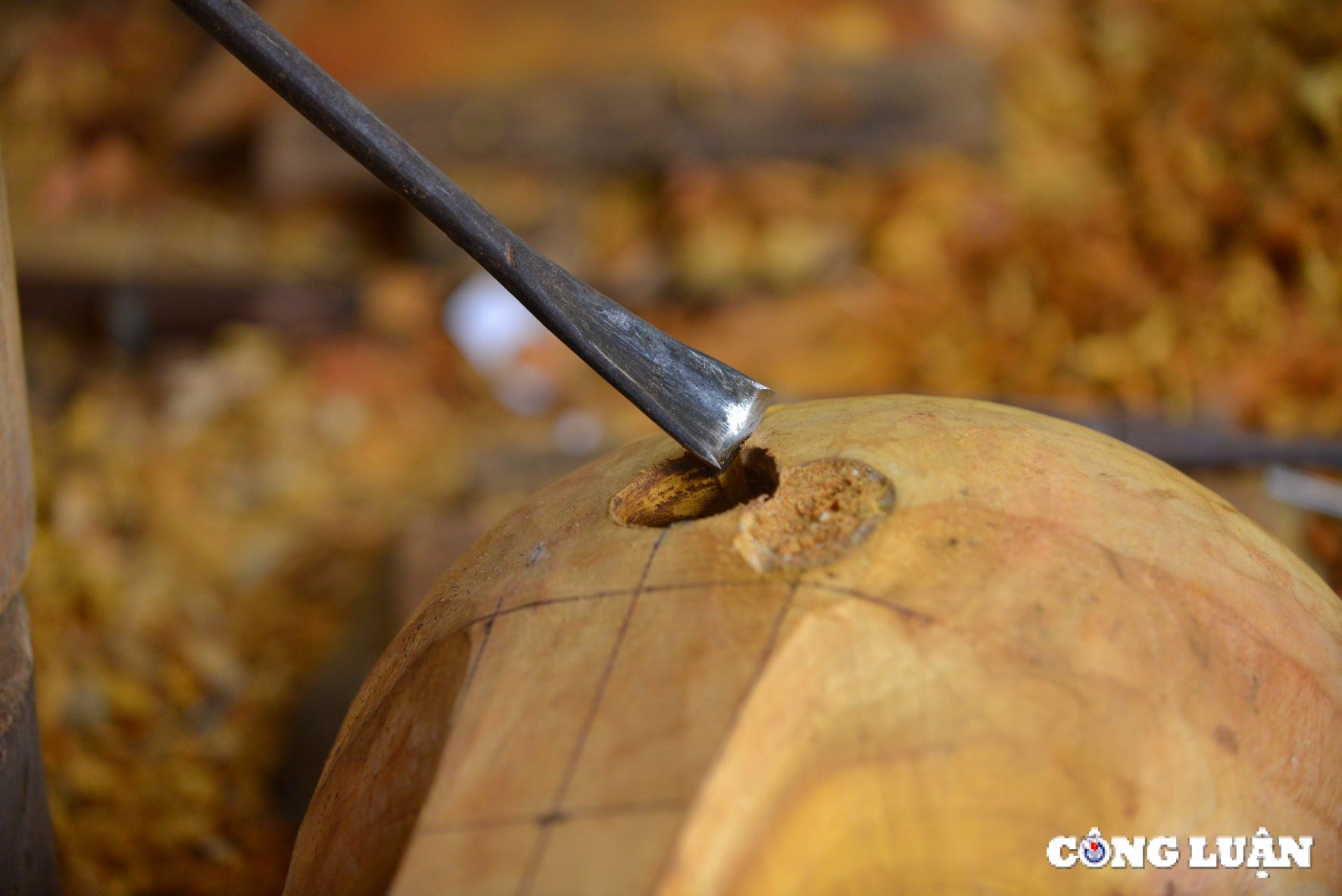
This specially shaped long chisel is the tool that creates the magical sound of each wooden fish. Photo: Minh Giang
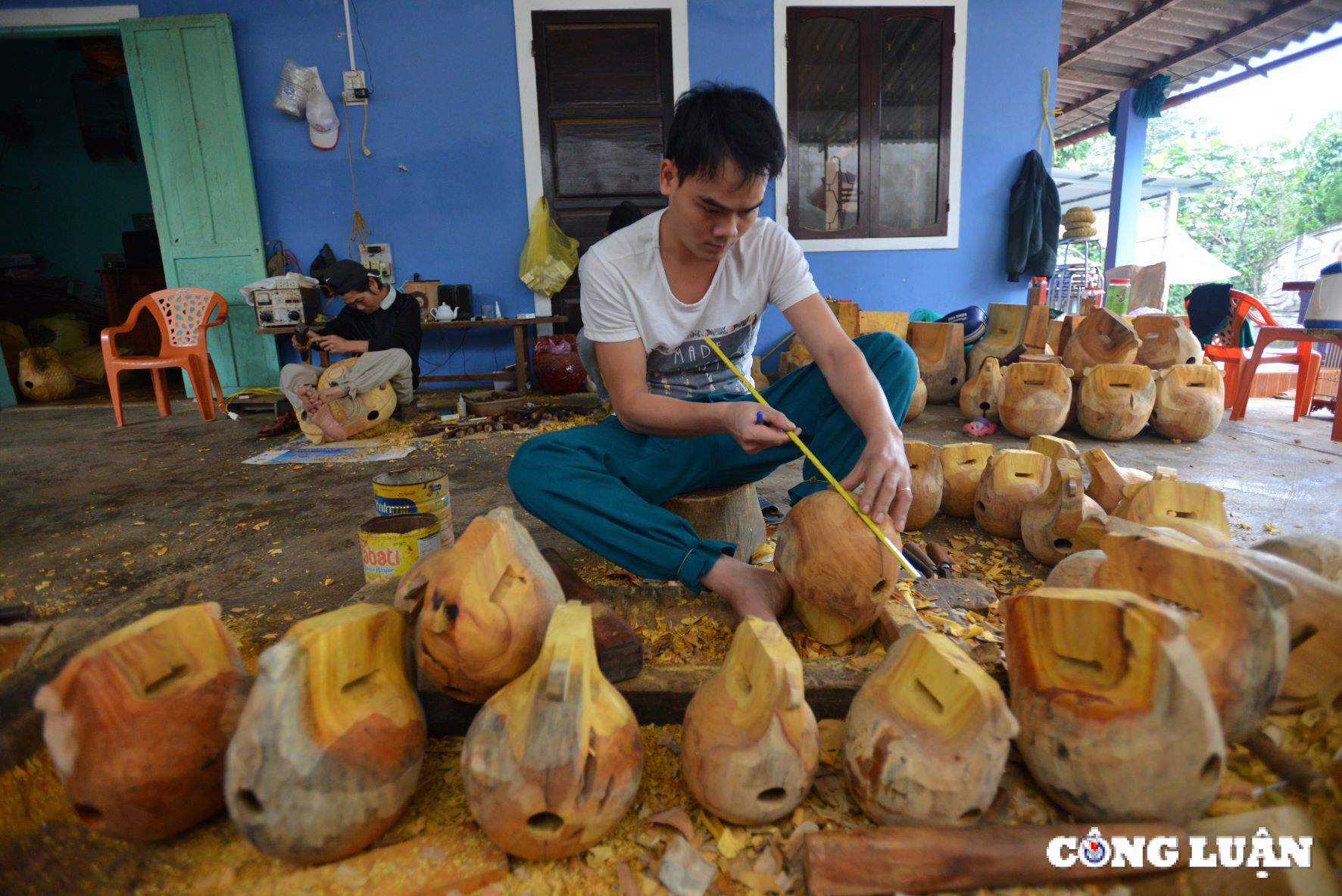
Pham Ngoc Phuc carefully measures and calculates the position of the sound hole of each wooden fish. Photo: Minh Giang
Article and photos: Minh Giang
Source: https://www.congluan.vn/doc-dao-nghe-duc-mo-tai-xu-hue-post332539.html


![[Photo] Prime Minister Pham Minh Chinh chairs conference to review the implementation of Resolution No. 18-NQ/TW](https://vstatic.vietnam.vn/vietnam/resource/IMAGE/2025/4/14/dcdb99e706e9448fb3fe81fec9cde410)
![[Photo] Ceremony to welcome General Secretary and President of China Xi Jinping on State visit to Vietnam](https://vstatic.vietnam.vn/vietnam/resource/IMAGE/2025/4/14/5318f8c5aa8540d28a5a65b0a1f70959)


![[Photo] General Secretary To Lam holds talks with General Secretary and President of China Xi Jinping](https://vstatic.vietnam.vn/vietnam/resource/IMAGE/2025/4/14/b3d07714dc6b4831833b48e0385d75c1)

























































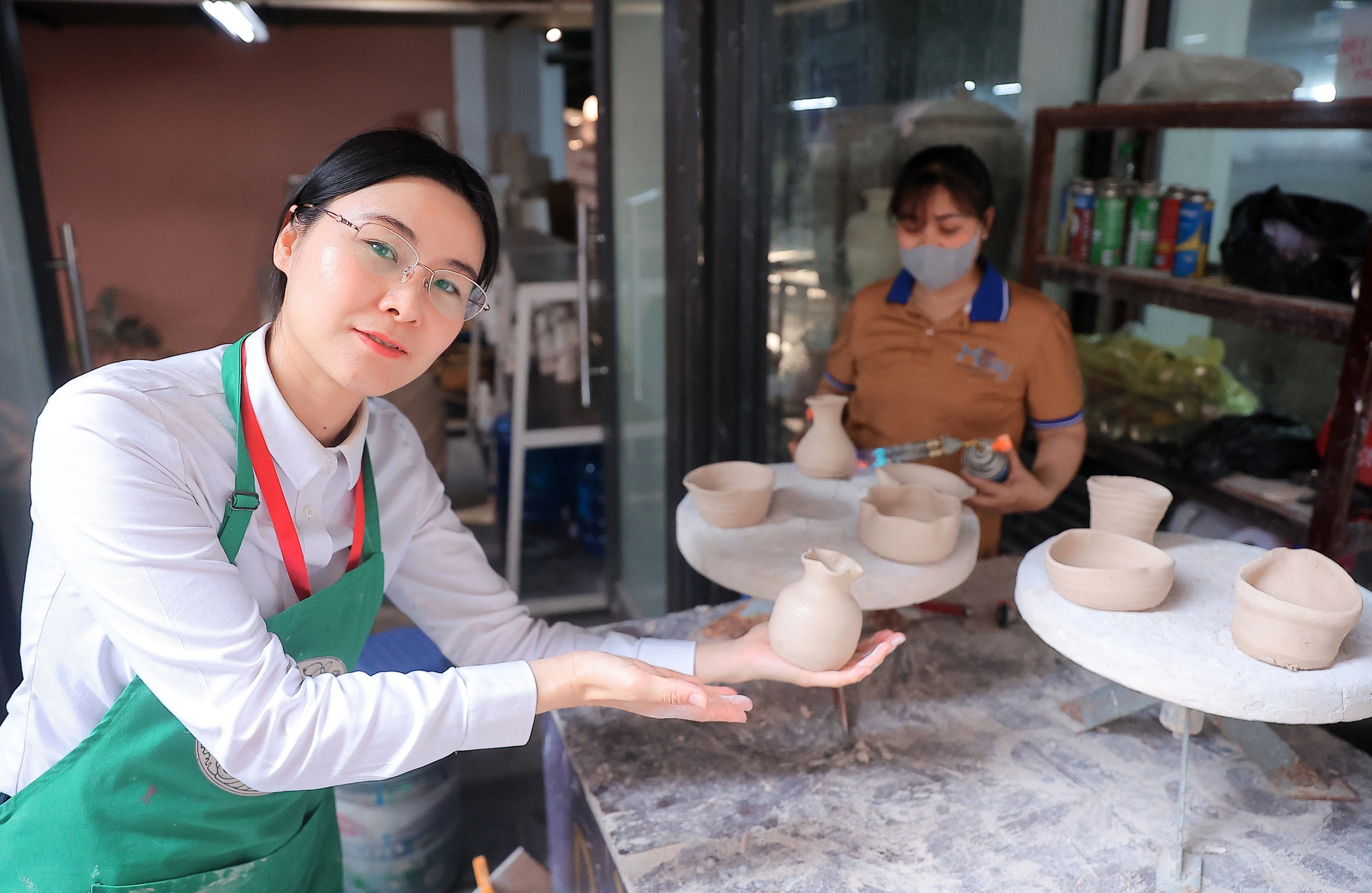


































Comment (0)